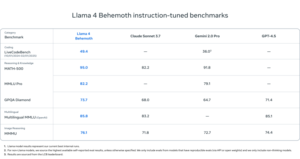Reassess Your Assumptions About DeepSeek’s AI Expenditure

Overview of the Current State of AI Investment
The recent stock market downturn, characterized by a sudden surge in interest around DeepSeek AI—a new Chinese AI technology—may suggest a decrease in corporate investment in artificial intelligence hardware and systems. However, insights gathered from a recent generative AI conference hosted by Bloomberg Intelligence reveal a contrasting story: enthusiasm for AI technologies remains strong, prompting continued financial commitments in this sector.
The Generative AI Conference Insights
During the "Generative AI: Scaling Laws Post DeepSeek" event in New York, attendees and speakers consistently highlighted the overwhelming demand for generative AI solutions. Mandeep Singh, a technology analyst at Bloomberg Intelligence, noted that across ten panels, participants indicated that there is currently no excess capacity in AI infrastructure. Moreover, discussions around a potential market bubble focused predominantly on future needs rather than on current oversupply.
- Key Observations:
- Sustained Demand: No panelists claimed an oversupply in AI resources.
- Investment in Infrastructure: The consensus among experts was that investment in AI infrastructure is not only necessary but expected to grow in the near future.
The Impact of DeepSeek AI
The excitement surrounding DeepSeek AI has led to speculation that companies can achieve significant efficiency with less expensive resources. Anurag Rana, another analyst with Bloomberg, posed critical questions regarding the current cycle of AI infrastructure investment. While no one has definitive answers, there is optimism around the potential for reduced costs in running AI models, similar to the historical drop in cloud computing expenses.
- Potential Cost Reductions:
- DeepSeek AI challenges the need for expensive hardware setups, leading to speculation that future investments may not need to reach heights like the proposed $500 billion Stargate project by major players including SoftBank and OpenAI.
Broader Themes in AI Investment
The conference also underscored the growing necessity for various AI models across enterprises. Unlike in the past, where one model might dominate, today’s landscape suggests that businesses will likely require many specialized models, often trained on proprietary datasets.
- Key Insights:
- Diversity of Models: Enterprises may implement hundreds or thousands of AI models tailored to specific tasks.
- User Empowerment: Industry leaders emphasized the importance of empowering non-experts to develop AI applications instead of relying solely on a small group of highly specialized individuals.
The Role of AI Agents
As organizations increasingly adopt AI solutions, the creation of AI agents—software that can autonomously perform tasks—has become a focal point. Leaders like Microsoft’s Ray Smith addressed the necessity for a single interface to manage multiple AI agents effectively, predicting a future where daily tasks are handled by specialized agents interacting seamlessly within business workflows.
- Processing Demand: The rise of numerous AI agents will elevate demand for processing power, reinforcing the need for cost-effective solutions.
Cost Challenges and Energy Consumption
Despite the optimistic forecasts, the financial implications of expanding AI infrastructure pose significant challenges. In a landscape that already demands substantial financial resources for hardware and energy consumption, addressing these cost factors will be crucial for fostering broader adoption of AI technologies.
- Current Energy Needs: Data centers run AI models currently consume vast amounts of energy and will continue to do so as more models emerge.
- Investment and Budgeting Concerns: Industry analysts are closely monitoring whether major tech companies will maintain their capital expenditure plans for AI amid potential economic fluctuations.
The Economic Landscape Affecting AI
As the conference concluded, there were palpable uncertainties stemming from economic factors, including shifts in stock market performance and potential new tariffs that could alter corporate spending priorities. Analysts warned that traditional sectors of tech spending could suffer if a broader economic downturn occurs, prompting CFOs to reevaluate their budgets.
- Economic Pressure: The consideration of non-AI technology spending may lead companies to pivot resources if economic conditions become severe.
In summary, while the stock market’s volatility has raised questions about corporate spending habits in AI, the underlying demand for innovation and infrastructure in this sector remains robust. The transformation within businesses, reflected by the increasing reliance on diverse AI models and agents, underscores a dynamic and evolving market, with cost efficiency becoming a central theme for future development.






